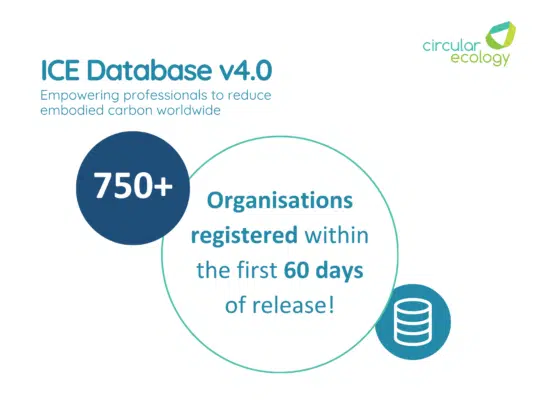What's the Difference Between a Carbon Footprint and Embodied Carbon?
Embodied carbon is the carbon footprint of a material
If an activity involves the physical treatment or physical handling of a material (note that products are made up of materials / ingredients) then it may counted towards embodied carbon. On the other hand, activities such as electricity used to power electronics, fuel consumption in a car, and the heating & lighting of a building are not considered embodied carbon, they are instead a carbon footprint.
The maintenance of a material or product is still covered by embodied carbon and this should be accounted for in the in-use phase of the life cycle. Likewise, the end of life treatment of a material or product would be counted towards the embodied carbon emissions in the final life cycle stage.
If you are interested in further understanding the difference between a carbon footprint and embodied carbon we recommended that you look at the Inventory of Carbon and Energy database, which is a free embodied energy and carbon database for materials.
If you like this article please consider following us on Twitter, connecting on LinkedIn, subscribing to our Newsletter or sharing this page using the buttons on the left hand side of this page.
ICE Database: Over 750 Organisations Registered in the First 60 Days!
The ICE Database v4.0 launched in December 2024. Within the first 60 days of launch, [...]
Feb
Upcoming Webinar: Whole Life Carbon Assessment of Construction Projects: What You Need to Know
Join Circular Ecology for a webinar on Whole Life Carbon Assessments (WLCA) in Construction Circular [...]
Feb
Webinar Recap: Carbon Offsetting, Carbon Neutral, and Tree Planting: What You Need to Know
On February 6th, Circular Ecology hosted an engaging and insightful webinar focused on carbon offsetting, [...]
Feb
Upcoming Webinar: Carbon Offsetting, Carbon Neutral, and Tree Planting: What You Need to Know
Circular Ecology would like to invite you to a webinar on the 6th of February, [...]
Jan



